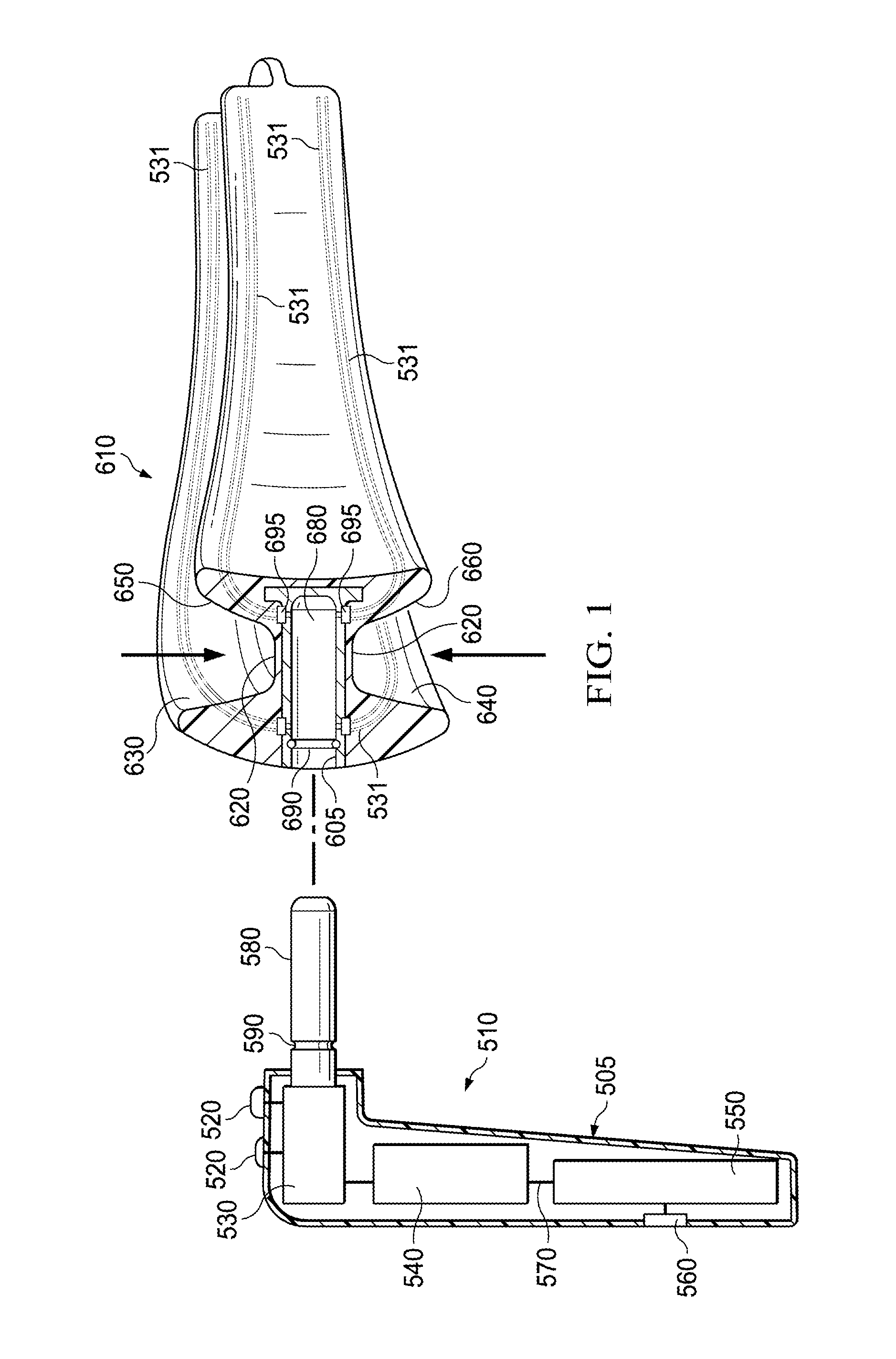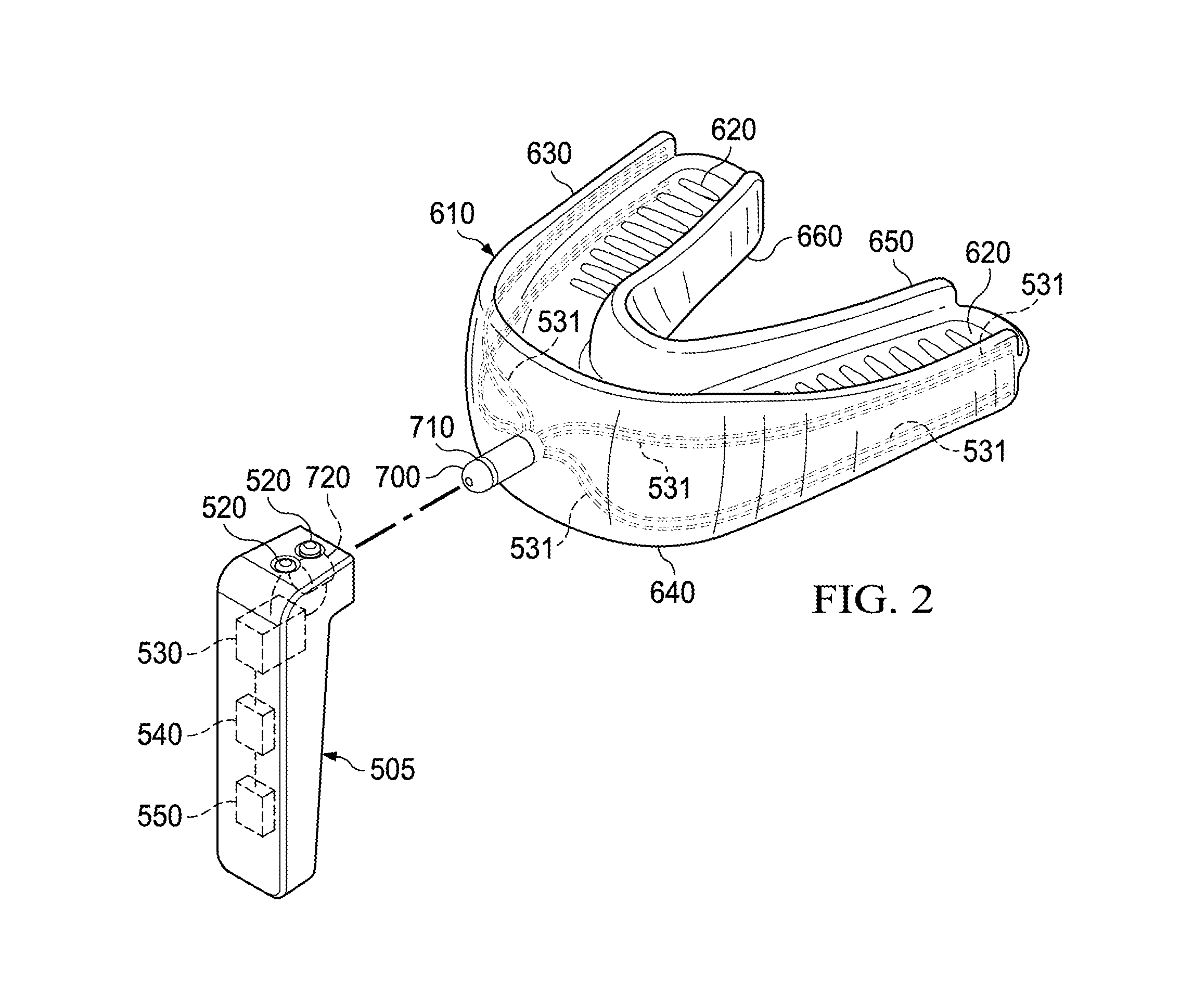Electro-orthodontic device
a technology of electro-orthodontics and orthodontic appliances, applied in the field of electro-orthodontics, can solve the problems of inability to shorten the treatment time by increasing the force, the treatment time is usually longer, so as to reduce the number of wires and connections, the effect of reducing the size of the spa
- Summary
- Abstract
- Description
- Claims
- Application Information
AI Technical Summary
Benefits of technology
Problems solved by technology
Method used
Image
Examples
Embodiment Construction
[0084]The disclosure provides a novel electro-orthodontic remodeling device having a special bite plate that contacts lingual and facial teeth surfaces, in addition to occlusal surfaces, and has electrodes thereon for provide current or EM fields to the teeth and / or periodontal tissue.
[0085]The invention can comprise one or more of the following embodiments, in any combination:[0086]An electro-orthodontic remodeling device comprising: an intraoral bite plate having a substantially U-shaped surface for contacting an occlusal surface of teeth; said U-shaped bite plate having an outside edge having upper and lower rims to contact upper and lower facial surfaces of teeth and gums; said upper and lower rims having anodes and cathodes on tooth and gum contacting surfaces thereof; an extraoral waterproof housing containing a power source operably coupled to a processor for controlling said voltage source and providing said anodes and cathodes with either: a current of less than 100 μAmp at...
PUM
 Login to View More
Login to View More Abstract
Description
Claims
Application Information
 Login to View More
Login to View More - R&D
- Intellectual Property
- Life Sciences
- Materials
- Tech Scout
- Unparalleled Data Quality
- Higher Quality Content
- 60% Fewer Hallucinations
Browse by: Latest US Patents, China's latest patents, Technical Efficacy Thesaurus, Application Domain, Technology Topic, Popular Technical Reports.
© 2025 PatSnap. All rights reserved.Legal|Privacy policy|Modern Slavery Act Transparency Statement|Sitemap|About US| Contact US: help@patsnap.com



